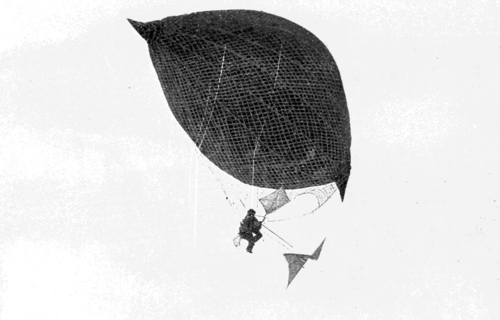set, and the wire simply to support the machine at the start. When the motor developed one and a half horse-power the stroke of the wings was sufficient to raise it and cause a jump along the wire. The total weight of the apparatus was about seventy-five pounds, and the motor could be run to develop three horse-power for a little time, and with that power it flew along in an interesting manner.
In studying the principles of mechanical flight, many experimenters have made little flying toys and have launched them in the air to see how they worked. M. Pichancourt made a number of these, with twisted rubber as motive power, but no one of them ever sailed more than sixty-three feet. Prof. S. P. Langley had greater success in this
direction, and one of the rubber motor toys' is shown in Pig. 11. I do not know how far it flew. Lawrence Margrave made use of a tube of compressed air, on which were mounted wings that vibrated as long as the air furnished enough power. Tie built one of these, seven feet in length, that weighed only fifty-nine ounces, and it flew 350 feet. Another form of toy, designed to be thrown from a high station, is shown in Fig. 12. Several of these were built by James Means and launched from the top of a lighthouse in Boston harbor. The length was about six feet, and they sailed a considerable distance.
Mr. Beecher Moore, of Buffalo, N. Y., has originated the very interesting machine shown in Fig. 13. Mr. Moore states that the working model which he constructed was charged with a slow-burning mixture of saltpeter, sulphur and charcoal, and would fly about 500

